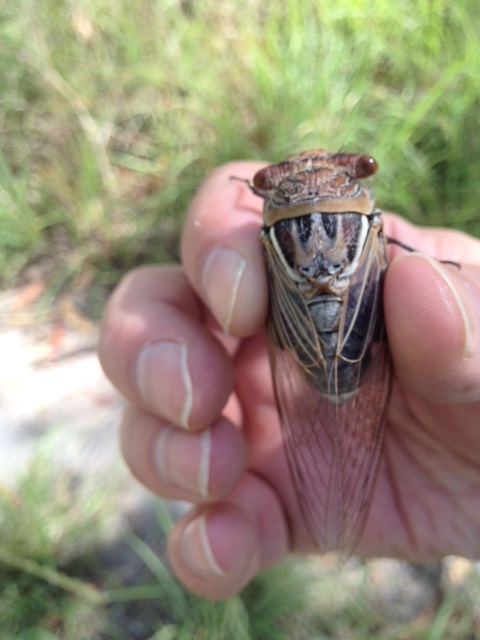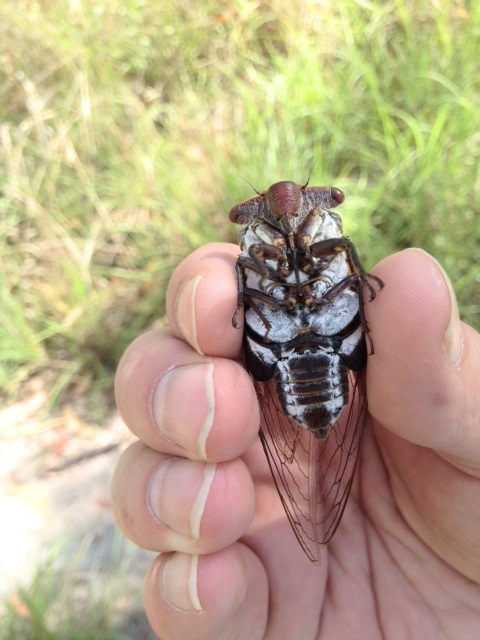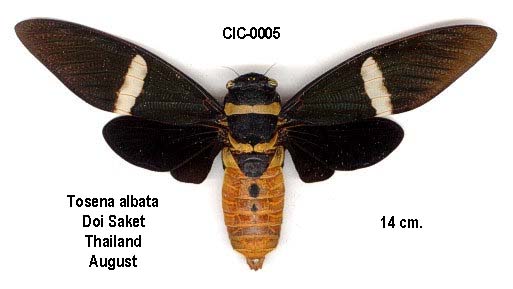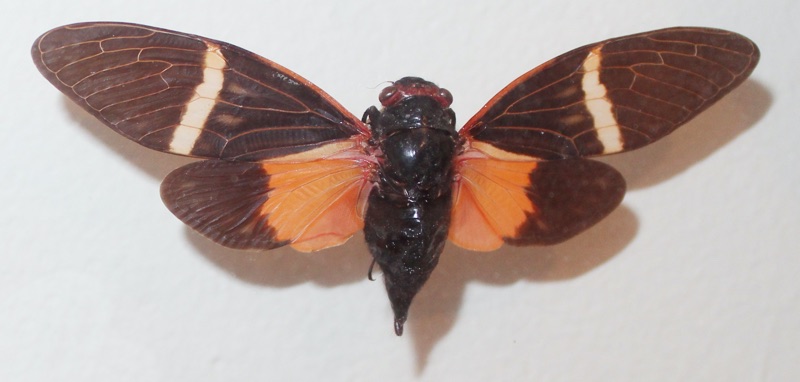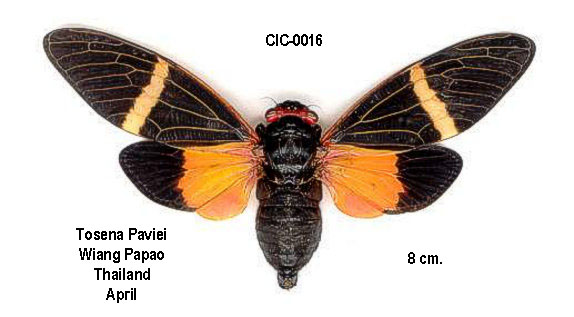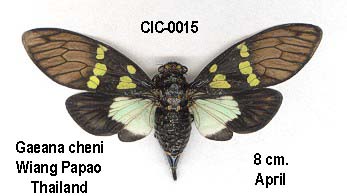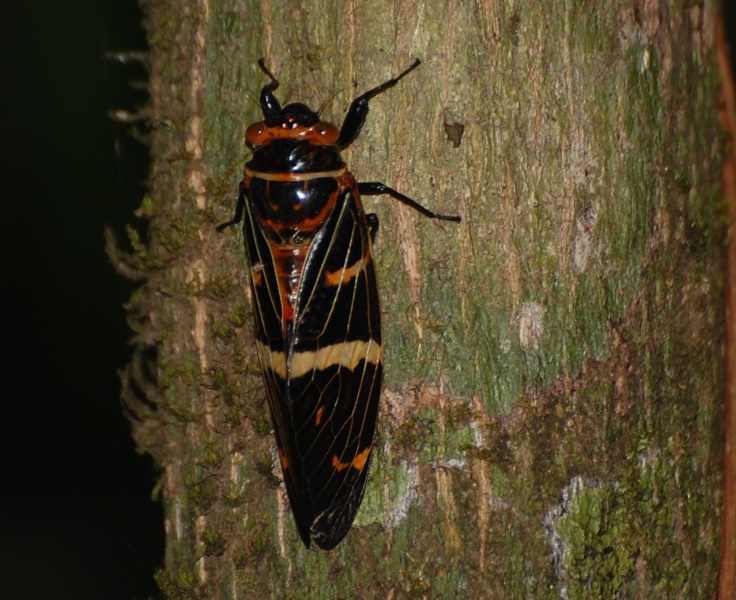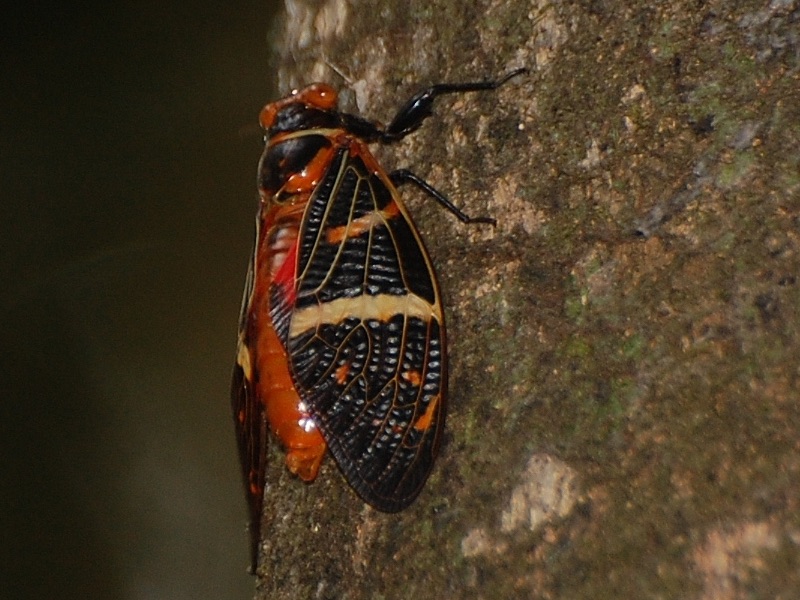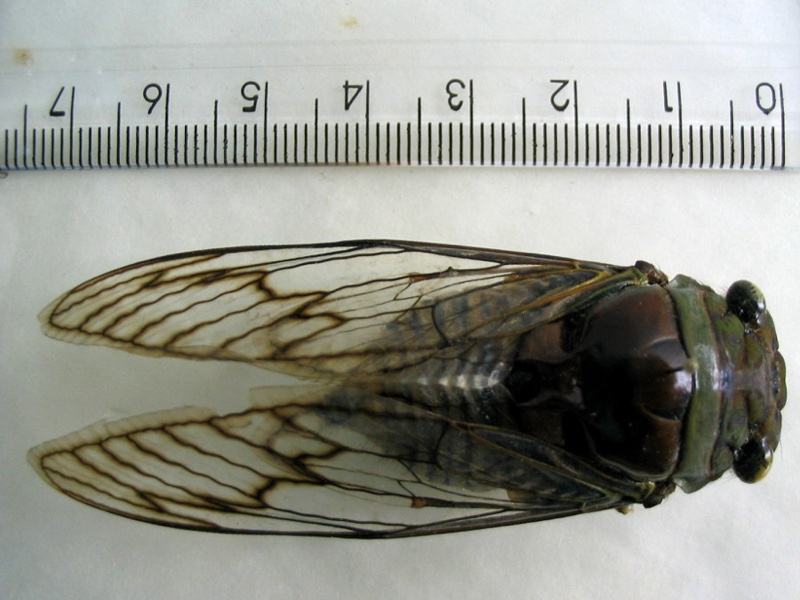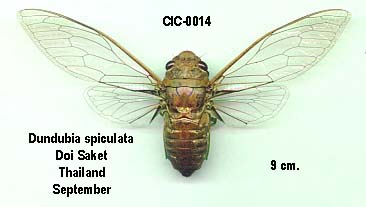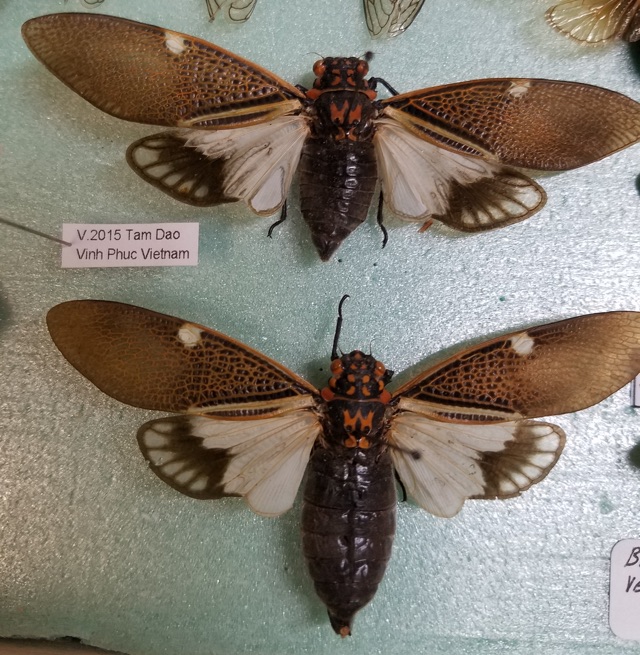Distantalna splendida splendida is a cicada found in China, Thailand, India, Burma, Cambodia, Laos, and Vietnam. It is formerly known as Tosena splendida. It is known in pop culture as the basis for the Cicada 3301 logo.
Photo by Dan Mozgai:
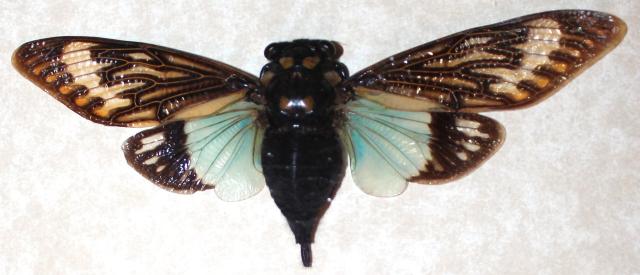
Photo by Michel Chantraine:
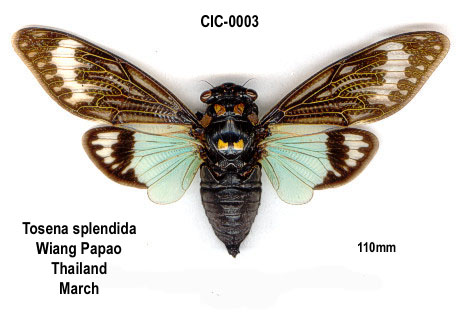
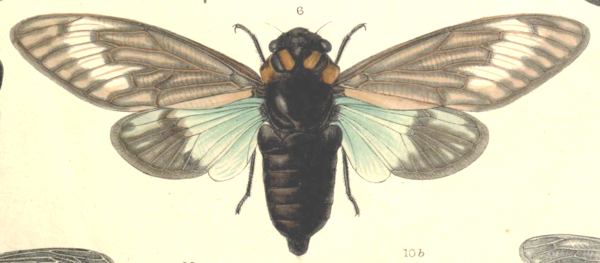
This description comes from A Monograph of Oriental Cicadas by W. L. Distant. 1889-1892. Read it on the Biodiversity Heritage Library website:
Body above black; front with a reddish spot at each basal angle; eyes, two small spots on vertex, four large spots to pronotum (two on disk and one at each posterior lateral angle) and two spots on disk of mesonotum,* luteous. Body beneath and legs black; lateral margins of the face, a wide central annulation to femora, and a central discal series of subtriangular spots, sanguineous.
Tegmina and wings— where not obscured by darker markings— pale hyaline, exhibiting varied opaline luster, which in some lights is found to be ornamented with close and regular series of transverse darker strife ; tegmina at base (narrowly) and costal membrane shining blackish ; venation bright luteous and for two-thirds from base broadly margined with shining blackish, and a series of shining blackish marginal spots on the apices of longitudinal veins to apical areas largest and somewhat fused at apex; claval area pale greenish. Wings pale greenish for nearly two-thirds their area from the base; remaining apical area shining blackish, enclosing a submarginal series of pale opaline spots, of which the largest are subapical.
Scientific classification:
Family: Cicadidae
Subfamily: Cicadinae
Tribe: Ayuthiini (formerly Tosenini as of 20212)
Subtribe: Distantalnina
Genus: Distantalna
Species: Distantalna splendida splendida (Distant, 1878)
References:
- Species name change information comes from Allen Sanborn’s Catalogue of the Cicadoidea (Hemiptera: Auchenorrhyncha).
- New Tribe: Hill Kathy B. R., Marshall David C., Marathe Kiran, Moulds Maxwell S., Lee Young June, Pham Thai-Hong, Mohagan Alma B., Sarkar Vivek, Price Benjamin W., Duffels J. P., Schouten Marieke A., de Boer Arnold J., Kunte Krushnamegh, Simon Chris (2021) The molecular systematics and diversification of a taxonomically unstable group of Asian cicada tribes related to Cicadini Latreille, 1802 (Hemiptera:Cicadidae). Invertebrate Systematics 35, 570-601. https://doi.org/10.1071/IS20079
